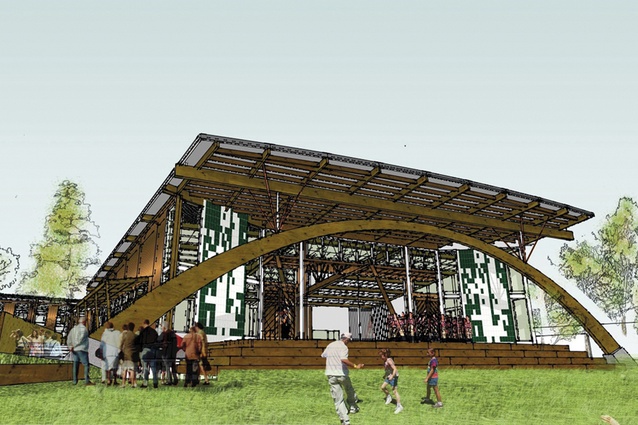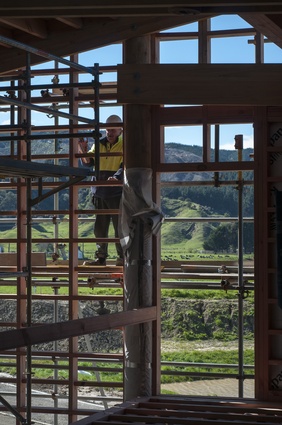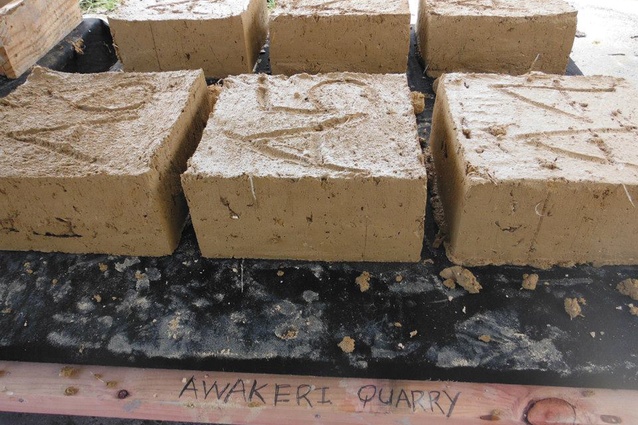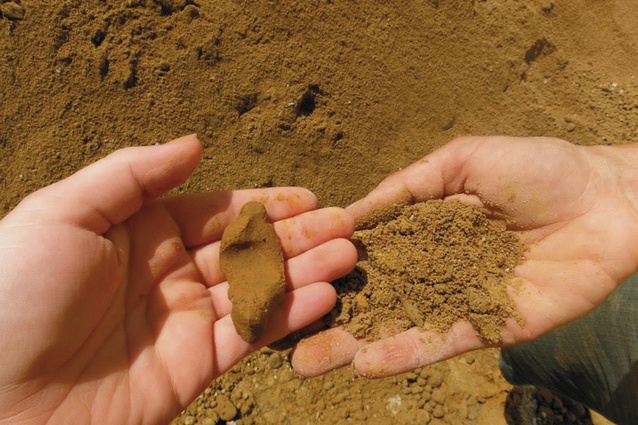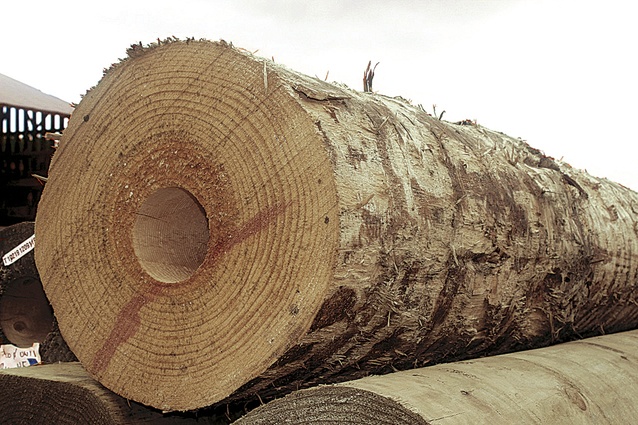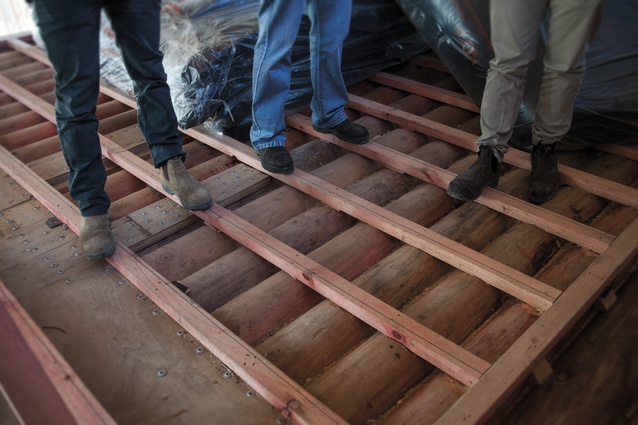Living building
New Zealand's most advanced sustainable building is complete, after an 11-month build that posed significant challenges.
Construction of what is set to become New Zealand’s first Living Building was completed this month (December), with the final landscaping to be finished in January, and the project handed over to Tu-hoe later that month.
Known as Te Uru Taumatua, the $15 million 1,700m2 building will provide a much-needed headquarters for Tu-hoe and a central meeting place for the iwi, which is spread out across the Bay of Plenty. Utilising a world-first structural system, the building will not only be the country’s most advanced sustainable building, generating its own electricity and water, and completely carbon neutral, it has generated interest from around the globe centered on the cored round timber logs that give the building its structural strength.
Designed by Auckland firm mlb Consulting Engineers, and developed by Tuakau wood producers, TTT Products, the cored logs are used for the foundations, as well as the structural system. The shear walls are made up of interlocked cored poles, and are tensioned by inserting steel rods through the centre void.
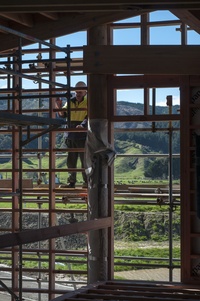
Arrow International construction manager Todd Fisher said he arrived on site in Taneatua, a small town near Whakatane, once the building pad was down. “The first stage was to set out the footprint of the building. After that we had 216 piles driven into the ground,” Mr Fisher said.
The piles ranged from 10 to 12 metres in length, and were driven down to a depth of 10 metres. “Normally that number of piles would take a couple of weeks to drive into the ground. But because of the technology developed by TTT in which the piles were vibrated into the ground it only took a few days.”
Holes were pre-drilled down to about four metres into which the piles were placed before being vibrated down to riverbed level. Originally it was thought the ground would be hard enough to warrant sending a water jet through the cored centre of the logs to assist with the vibration process, but this did not eventuate as a result of the ground condition. The aboveground concrete foundations were then placed, which was a challenge in itself because of the requirements of the Living Building Challenge.
“The foundation was built using a traditional formwork method but it was quite a lot of work because it had to be done in three separate stages. We had to form up one stage of the footings then pour the concrete in those and then remove the formwork and re-use it for the next stage. Once we had used the material for the concrete it wouldn’t have been good for anything else so we limited the amount of material we used to reduce wastage.”
Once the footings were in, a process that took two-and-a-half months, the poles were placed, which act as the main structural columns. Then the glu-lam floor beams, measuring up to 15 metres in length, were brought in, which provide the flooring for level two. The floors themselves were constructed from a series of interlocked rounded logs that were placed on top of glu-lam beams.
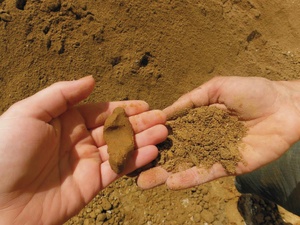
The stringent requirements of the LBC allow materials to be sourced only from a certain radius around the location of the project itself. This led to the timber used in the building being sourced from local Tu-hoe forestry blocks and bush land. All the rounded, cored logs and structural timber is pine from the Kaingaroa Forest, and down and dead logs collected from Tu-hoe bush land are native timber; Totara was milled and used as shiplap cladding, while Rimu and Matai was used for tongue and groove flooring as well as autoclaves and skirtings.
“The main structural stability of this building is gained from the unique wall system,” Mr Fisher said. “In the foundations wherever these walls are, there is an anchor that was cast into the foundation. These anchors allow steel rods to be fed down through the centre of the cored logs.”
The steel rods are screwed into the anchor in the footing; each structural wall has up to six rods. Following the main roof rafters being put in place, which are connected to the top of the structural poles, and the plywood roof being laid, TTT and mlb tensioned the rods.
“A downward pressure of up to 12 tonnes was placed on them, which puts the walls under tension, giving them their structural stability. This was done by placing a hydraulic jack over the steel rod and pumping the jack up. Once they were tensioned, they were screwed in place on top of a steel plate. Basically the building, from my experience of it, was designed to bolt together like a big Meccano set.”
The building sits directly on top of the main North Island Fault System, and was designed to withstand a one-in-2500-year seismic event and achieve a 100-year durability rating. The shear walls posed a particular challenge during construction, with a tolerance of only 0.03mm along the log, and 0.3mm across the log in order to ensure the cored centre of the poles lined up with anchor points in the foundation and precisely interlocked with each other. “A lot of logs were slightly uneven so this had to be carefully thought out. If each one was out by even 1mm in the scalloping process, that meant at the end of a 15-log wall, it would be out by 15mm,” Mr Fisher said.
TTT Products director John Reelick said the cored logs were far more economical to produce than steel products, and also required less energy to drive those poles that were used for piles into the ground. “It was a challenge to ensure we met the exceptionally tight tolerances required for the shear walls. We had to make a specialised machine that could do that. There was no machinery currently available that could do what we needed. What we came up with in the end was driven hydraulically and with a chain drive, and had two carriages, ensuring the measurements were exactly right. In the end there were about 1,200 of these logs used in the structural system, for columns, flooring and shear walls, as well as 216 piles.”
Fifteen interior walls were constructed with mud bricks, made with local clay by locals. “The bricks were designed to regulate temperature and humidity in the building,” Mr Fisher said. “Two different types of clay were used from local areas, and combined with pumice, wood chips and recycled paper mulch. They were all hand-made. No cement was used in the walls themselves. Mortar was made using the same clay as the bricks, but without adding the wood chips. Each brick was placed on site by hand; mortar was scooped from a bucket and the bricks were placed one by one, without the use of trowels. This was a pretty cool process. It was all about getting in there and digging in with your hands.”
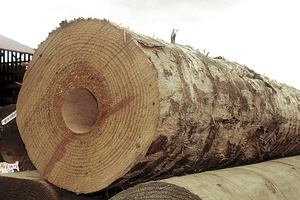
To meet LBC requirements, every hectare of development requires an equal amount of land to be set aside for landscaping, hence the building will sit amongst 40,000m2 of gardens. It will also achieve net zero water and power, and a one-time carbon offset will account for the embodied carbon during construction.
At the front of the facility a striking glu-lam archway takes pride of place. “From base to base, it is 26 metres long, and from ground to top it is six metres high,” Mr Fisher said. “Being a circular shape, that it was built off site, and having to build the concrete footings on site, it was extremely challenging to get the dimensions right for the concrete plinths.”
Arrow project director Jeff Vivian said Tu-hoe’s original requirements for the building, although in line with the LBC, were not strictly about “green building”. “Tu-hoe wanted a green building, but they didn’t use the word green. They made the comment early on that if they were hot they would open a window and if they were cold, they would put a jumper on. That is how they have always operated. So their ethics came first, and then Jasmax introduced them to the Living Building Challenge,” Mr Vivian said.
As New Zealand’s first living building, Te Uru Taumatua has provided the construction team, consultants, subcontractors and suppliers with a wealth of new experiences, which Mr Vivian said would be invaluable as New Zealand embarked on constructing more living buildings.
In the immediate future Tu-hoe plans to take the experience gained from this project and roll it out to its 37 marae and a visitor centre at Lake Waikaremoana in the Te Urewera National Park, which will all employ high environmental and social sustainability standards.

